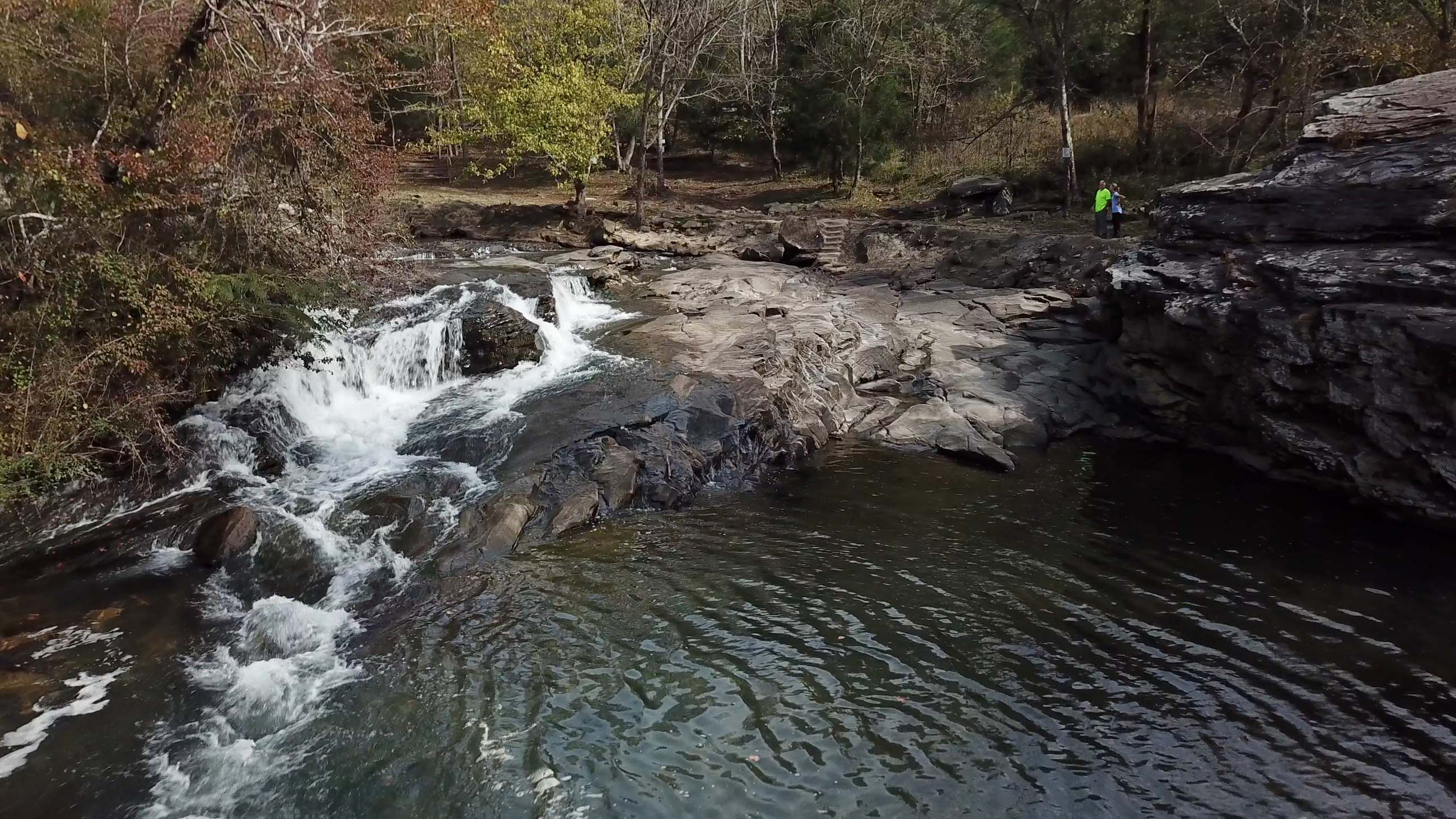Turkey Creek Classroom

Turkey Creek became a protected natural area in 2009 after a grant from Alabama’s Forever Wild Land Trust. Today, the site is cooperatively managed by BSC, the State Lands Division, the Freshwater Land Trust, the City of Pinson, and local groups that support conservation of the site.
Construction of the outdoor classroom began in 2020, and one of the first challenges was locating a suitable spot among the mixed pine and hardwood trees. “This is an outdoor education facility, so we wanted it to be surrounded by nature,” says full-time preserve manager Charles Yeager. “We wanted to tuck it into the woods, have it feel like it's part of nature and have the lowest impact possible.”
The classroom pavilion, designed by Birmingham’s ArchitectureWorks, is positioned on one of the site’s only flat areas and provides an eco-friendly spot to learn about the Preserve’s unique inhabitants including endangered species of fish, bats and turtles. The facility also teaches students about biodiversity, water quality and forest management.
“We don't have to go far to find really neat and exciting things,” says Yeager. “We have barn owls and hawks flying over us, birds singing. We have a wonderful diversity of trees. All of this lends itself to so many different kinds of educational experiences. The new pavilion allows us to host much larger school groups, which was always a huge challenge. Now we can host 100 or 200 kids at one time for an education program.”

Non-Profit Project
“What you're looking at here is a million-dollar project,” says Roald Hazelhoff, director of the nonprofit Southern Environmental Center at Birmingham-Southern College. “There's no way, as a nonprofit, we could have made this happen without the help of partners. A number of those partners have provided in-kind support, including Kirkpatrick Concrete, who supplied the concrete walkways for handicapped accessibility, as well as for where we will have our parking for special guests and receptions.”
For the last two years, Kirkpatrick Concrete’s sister company, National Cement Company of Alabama, Inc., (National Cement) has donated material used in the construction of the Turkey Creek pavilion.
“In the process of putting this big project together, we were way overwhelmed by the costs and the expenses of even the little things, especially with the huge increases in lumber and materials,” says Yeager. “The support we've received from Kirkpatrick Concrete and National Cement has absolutely made this project possible.”
“We participated last year by donating some concrete, and we're doing that again this year to help try to finish it up,” says Spencer Weitman, President of National Cement. “Roald Hazelhoff has a vision that he's carried out for years with Birmingham-Southern’s EcoScape program. We started contributing to those environmental projects because we believe in what he is doing.”
Weitman says National Cement is proud to be able to contribute to non-profit programs that are involved in teaching children or give back to the communities served by Kirkpatrick.
“It's part of what we do. It's our culture. The environmental programs that Roald conduct are about teaching children, and that’s in our company’s DNA. We’ve been blessed and been very fortunate, so we try to give back when we can,” Weitman says.
Special Features
“This is the first location where we have real bathrooms, which is a big issue for larger groups,” says Hazelhoff, “and we can use this also for a number of retreats, whether it's for the Boy Scouts or for companies or for even small weddings, none of which existed before at the Preserve.”
Yeager says the new addition will open a whole new line of opportunities “to get people out to Turkey Creek to enjoy Turkey Creek, but it's also going to help make our whole operation more sustainable.”
The structure itself is designed to keep its environmental impact to a minimum, be self-sufficient, and reuse rainwater to irrigate new trees and plants. “One of the features here that excites me personally is that we want to be able to keep our footprint to a minimum. And one way to do that is to use the runoff -- the rain from the roof -- capture it, collect it in a cistern and redistribute it as an irrigation system for the plants and trees that we're adding here,” says Hazelhoff.

Protecting the Future
Finding a balance between protecting the natural habitat and accommodating the growing number of visitors is tough to achieve, but the people behind the pavilion project are optimistic for the future of the formerly endangered site.
“When I first came here to Turkey Creek in 1989, I remember it well,” Hazelhoff says. “I brought my children here for a hike and was confronted with over 15 tons of debris lying along the creek edge.
"People were using this area as a dumping ground, and that kind of sent me into action."
"It’s very gratifying to be here now and see that instead of all the trash, there are trails. And instead of people parking their cars right by the waterfalls, they actually walk to the waterfalls where benches have been placed and festivals are even being held now. These are all signs of progress, and for that, I'm just personally gratified.”